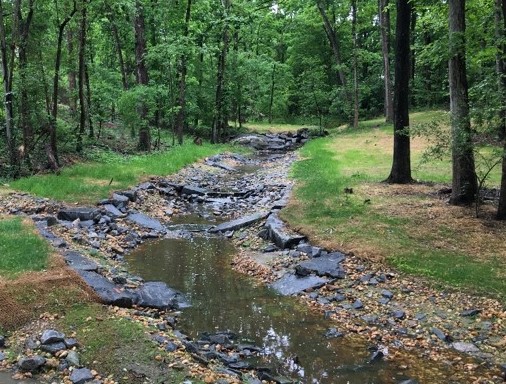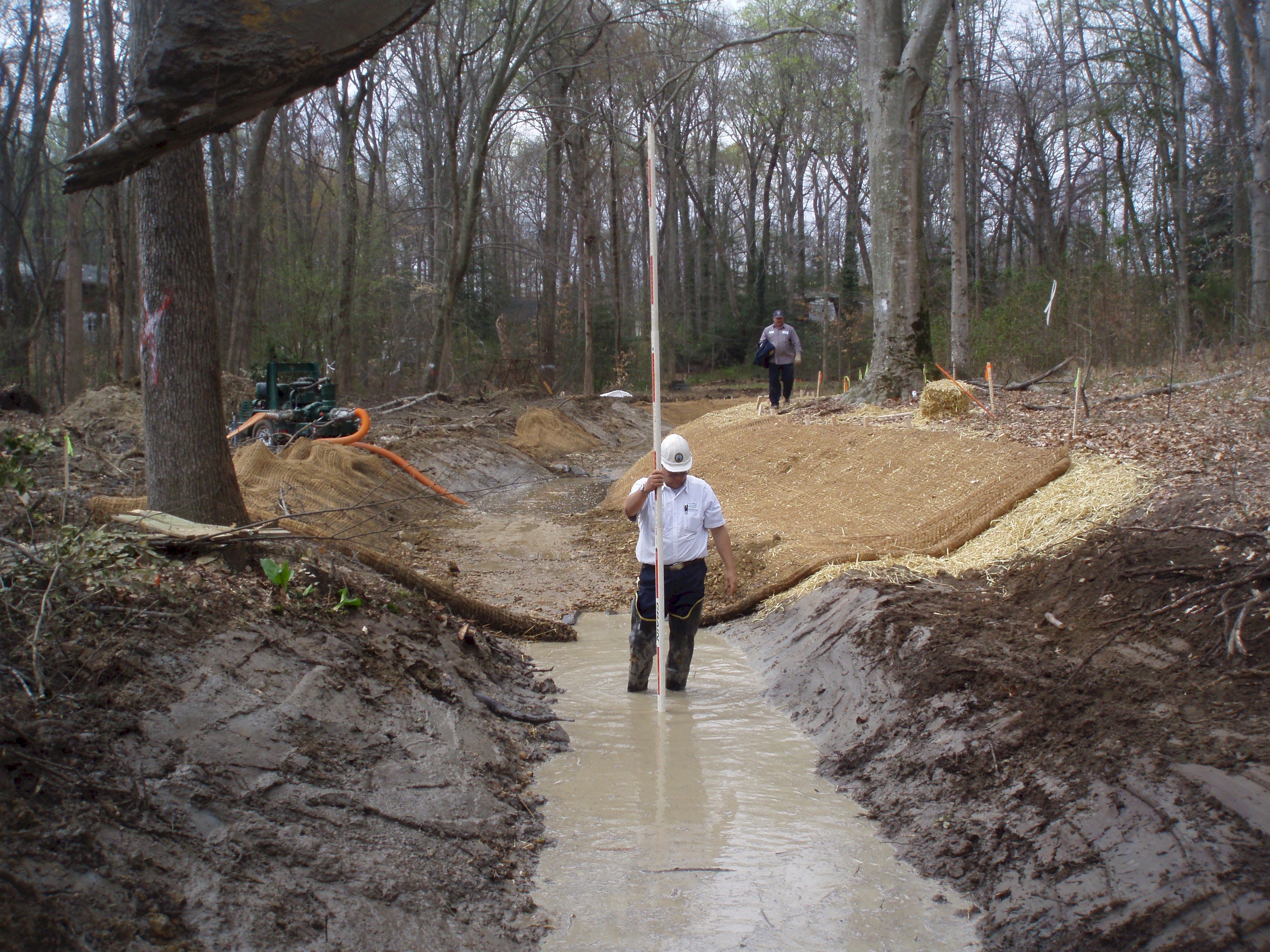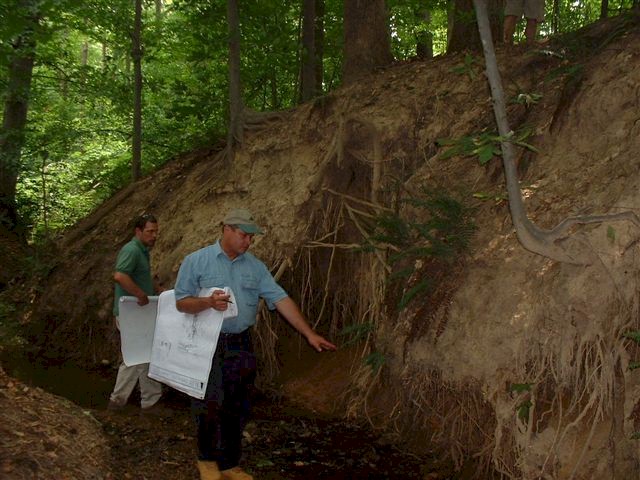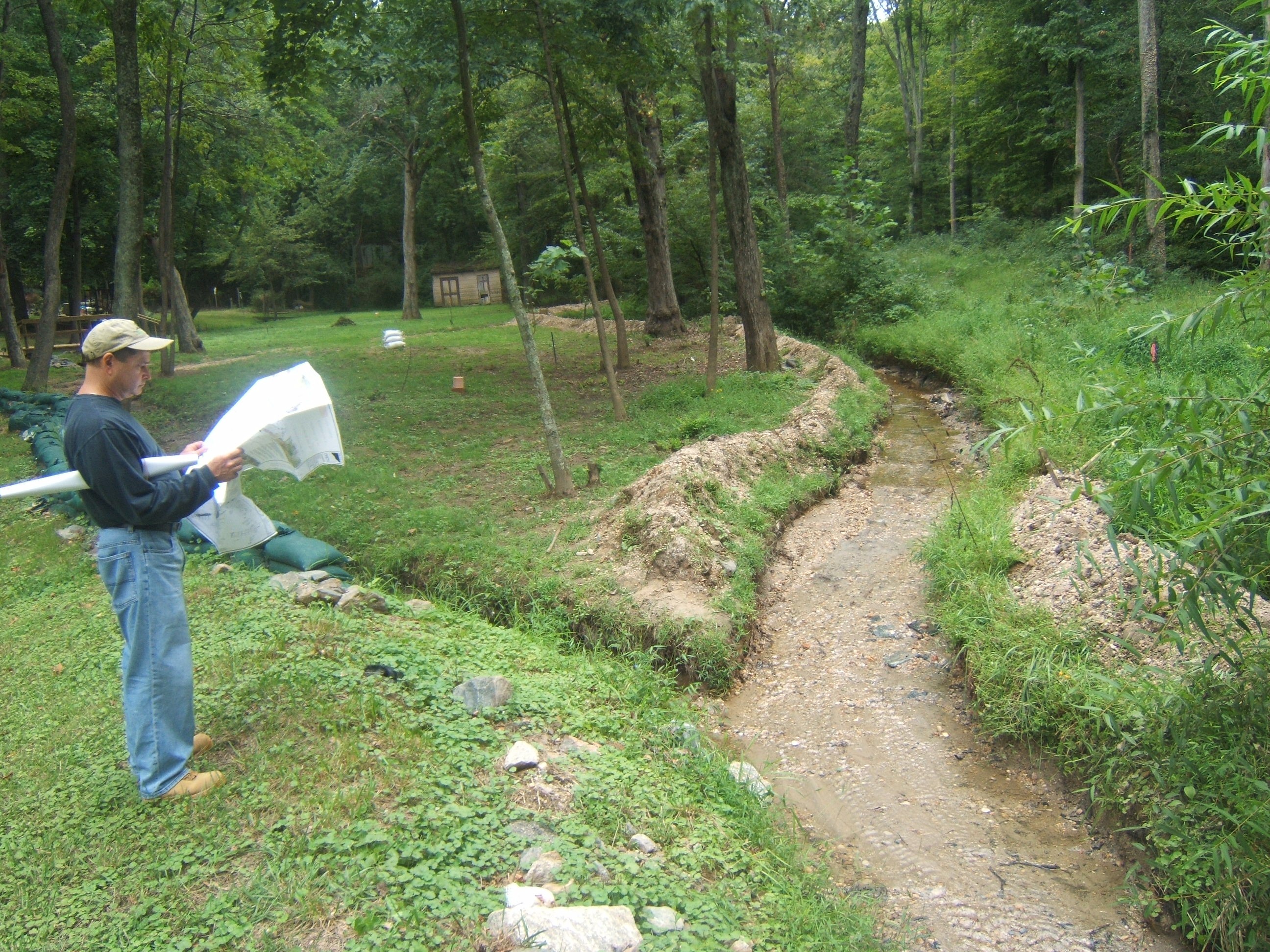Stream Restoration
Stream Restoration Projects

What is stream restoration? You have heard about it or have seen pictures. Maybe you have even been to one of the restoration projects located in the County, but what is stream restoration and why do we do it?
Here is a brief write-up prepared by the Northern Virginia Regional Commission (NVRC) with support from the County and other northern Virginia localities.
For more detailed information and a virtual tour of stream restoration projects completed in the region, please visit www.novaregion.org/1468/Stream-Corridor-Restoration
Prince William County has undertaken a number of stream restoration projects to improve the quality of our local streams and waterways. We identify projects during our field inspections or watershed studies. Projects include work along Cow Branch, Flat Branch, Powell's Creek, Marumsco Creek and Neabsco Creek.
Much like surgery, stream restoration projects can be messy, requiring us to cut and open up areas. These activities result in short term impacts:
- In-stream construction
- Channel disruption and relocation
- Clearing of vegetation and trees to allow for construction activities.
We monitor the project throughout the construction phase to minimize the impacts to the stream as much as possible. Despite the short term impacts felt during construction, there are many valuable long term benefits through our intervention. These benefits include:
- Return the stream to a natural state of stability
- Improve water quality
- Improve aquatic habitat
- Replant the disturbed forest
When the project is completed, staff continues to monitor the project area to ensure the stream is stable and the project goals are achieved.
Stream work achieves important benefits that:
- prevent or minimize flooding
- protect and preserve natural floodplains
- protect and improve water quality
- improve and maintain ecological functions
- reduce sediments and pollutants
- lower the levels of nitrogen, phosphorus and other harmful nutrients which impact aquatic life and water quality
- create and safeguard a healthy habitat for aquatic plants and animals
- channel the flow of the stream to reduce impact on infrastructure, such as buildings, sewer/water lines, bridges, etc.
Here's our stream restoration team at work:


